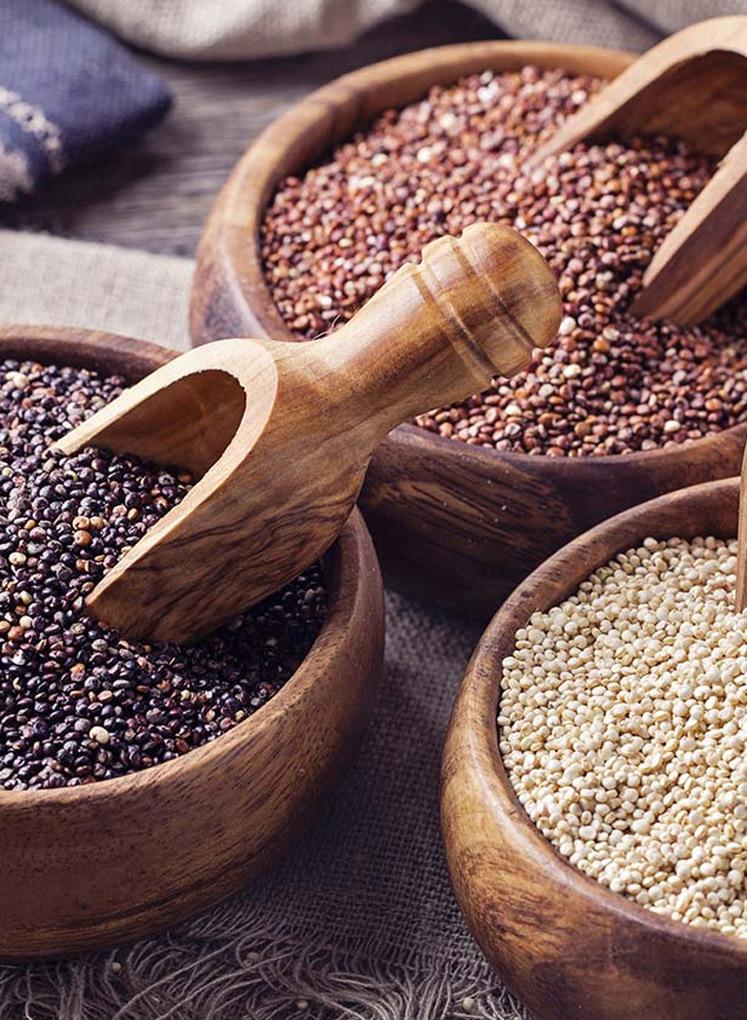
3 minute read
SUPER FOOD
Kaniwa THE WORLD'S Kaniwa THE WORLD'S
LATEST LATEST SUPER FOOD! SUPER FOOD!
Advertisement
In our health conscious world, people are always on the lookout for the next food item that will fend off disease and give us that highly prized healthy body. Food fashionistas and dietitians alike have in the past hailed such foods as blueberries, Brazil nuts and broccoli as the must eat foods of the day. Enter kaniwa (pronounced kanyee-wa), the latest so-called "super food" to hit our shelves. Some are hailing kaniwa's adaptability and nutritional value, but what exactly is kaniwa, and should we be running to the nearest health-food store to buy it?
Kaniwa, a seed of the goosefoot plant, originating from the slopes of the Andes Mountains in South America, has been a dietary staple for Native Americans for centuries. Renowned for its ability to grow in the most extreme of climates, it is closely related to quinoa, but smaller in size and terracotta in colour.
What, for many, gives kaniwa the edge over quinoa, is its lack of saponins, a component which can give foods an almost soapy, harsh flavor, requiring them to be thoroughly rinsed before cooking. Yet its taste has been described as close to quinoa: sweet, nutty and moreish. The seed can be added to a variety of meals, complementing meats, seafood and tofu particularly well.
What is most remarkable about kaniwa is its nutritional value, gram for gram outstripping even its cousin quinoa. Per half cup, kaniwa boasts 7 grams of protein, 4 grams of fiber and a mere 160 calories. It is totally gluten free, making it the perfect choice for sufferers of celiac disease or for anyone sensitive to too much gluten in their diet. Moreover, kaniwa is also a great source of antioxidants, its compounds linked to a reduction in several serious conditions including heart disease. It also contains all 9 essential amino acids, a necessary part of any diet, as well as a variety of vitamins and minerals, including calcium, iron and zinc.
Kaniwa is also simple to prepare, even for those with the most basic of kitchen skills. For one cup of kaniwa add two cups of water, bring to a boil and simmer for 1520 minutes or until the water is absorbed. Though gaining popularity, kaniwa may still be difficult to find, but persevere and you will be rewarded, for kaniwa is also easy on the pocket, especially if bought in bulk.
So, it's cheap, tasty, extremely healthy and will effortlessly slip into your dietary routine, four factors that make one reluctant to contradict this newly fashionable seeds entry into the "super food" canon.

By Jack Bergman


MA GAZINE
executive publishers Hal G. Fox & Suzanne Polk Fox
managing editor Suzanne Polk Fox
copy editor Christian Dischler
contributing writers Amber Marie Arevalos Jack Bergman Charlie Betley John Campbell Randy Cowen Dr. Aaron Dutruch D. C. Trinity Edwards Deanna Salles Freeman Sandra Langton Julie Maddock Donna Mavis Juliane Kristine Morris Jana Smith Bridget Webber design Suzanne Polk Fox Claire Thomas
The information contained in Inspire Health is intended for educational purposes only. A reader should never substitute information contained in Inspire Health for the advice of a health care professional. Jumpstart Publishing, LLC and publishers of Inspire Health, do not endorse or promote any of the products or services described in the pages of Inspire Health and the publishers do not verify the accuracy of any claims made in the editorial or advertisements contained in Inspire Health. Readers should not use the information in Inspire Health for diagnosis or treatment of any health problem or for prescription of any medication or other treatment. Readers should consult with a healthcare professional before starting any diet, exercise or supplementation program, before taking any medication, or have or suspect they have a health problem.
© 2022 Fox Printing & Creative Publishing, LLC, New Orleans, LA All rights reserved Printed in the USA by Fox Print Services (igofox.com)
Find us online!
www.inspirehealthmag.com










